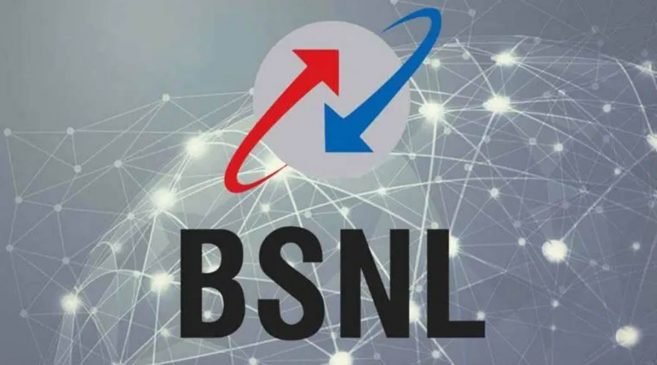Even as private telecom operators are busy expanding 5G networks, state-owned Bharat Sanchar Nigam (BSNL) has launched 4G services in pilot mode in parts of Punjab in a run-up to a formal rollout of 4G services.
The company has started live testing of its 4G services with 135 tower sites using indigenous telecom stack, communications minister Ashwini Vaishnaw said on Saturday. “Deployment of the first 200 towers on the India telecom stack has already started. About 135 towers have been deployed and very soon the entire 200 towers will be fully operational,” Vaishnaw said in response to a question by FE. “We will test it for another three months, then somewhere near August we will start ramping it up to almost 200 towers daily,” Vaishnaw said, adding that real environment testing of 4G using indigenous stack is necessary and the government will go step by step to ensure that the system is proper before exporting.
Also Read–Morgan Stanley sees no change in RBI repo rate, expects cuts in early 2024
Once the pilot is completed on 200 sites, the company will then commercially roll out 4G services initially in three districts of Punjab — Ferozepur, Pa-thankot and Amritsar. The government is yet to approve BSNL’s Rs 24,500-crore deal with TCS-led consortium for rolling out 4G services, including supply of equipment for 100,000 4G sites, and maintenance works.
Also Read–Is Mahila Samman Savings Certificate Eligible For Tax Rebate? All You Need To know
The deployment of 200 sites and supply of equipment by TCS and Tejas is part of the pre-order given by BSNL to test 4G services, a government official said. “There is no delay (in offering tender by BSNL for procuring equipment). It is a very complex transaction…but the process has started,” Vaishnaw had said in February. Owing to the delay in the launch of 4G services, BSNL lost 9.2 million mobile subscribers in the past 13 months as of January-end. The company has a total subscriber base of 105.13 million at the end of January, as per data from the Telecom Regulatory Authority of India (Trai).
In January, the state-owned telecom operators lost nearly 1.5 million mobile subscribers, which was the highest in 13 months. In the past three years, the company’s market share in terms of wireless subscribers fell to 9.21% in January 2023 from 10.3% in January 2020.
Also Read–RBI repo rate likely to be on hold, cuts expected in early 2024: Morgan Stanley
Regarding the development on BharatNet project, Vaishnaw said the number of household connections (FTTH — fiber-to-the-home) have increased to almost 130,000 per month from 50,000 per month five-six months back. Under the BharatNet programme, the government has a target to provide broadband connectivity to 250,000 gram panchayats by 2025. In February, FE reported that in the six financial years, including FY23, the government’s spending from the Universal Services Obligation Fund (USOF) has been weak. The weakness has been due to underspending of funds allocated for the BharatNet project for fiber connectivity to villages. In 2017, the Cabinet approved funding of Rs 42,068 crore for the BharatNet (Phase-I and Phase-II) projects. In 2021, the Cabinet allocated another Rs 19,041 crore to implement the project under the public-private partnership (PPP) mode, which, however, failed to attract the interest of the private players.
Also Read– Kotak Mahindra Bank succession: Meet the potential successors to Uday Kotak’s MD & CEO role
With regard to the phase 3 of the BharatNet project, post the merger of BSNL and Bharat Broadband Network (BBNL) in July, the government is not going ahead with the PPP model. BBNL is the implementation agency of BharatNet. “We are moving in that model which is now proven successful in which basically a village entrepreneur comes and does the last-mile connectivity, and BSNL provides the middle and the first mile. The system is working well,” Vaishnaw said.
Read More:– From NCR To Bengaluru, Rent Is Big, House Is Small As Home Rent Sees Sharp Rise In 1 Year
The government on Saturday also launched 254 mobile towers in 336 villages of Arunachal Pradesh, which will provide 4G services to 70,000 subscribers. According to Vaishnaw, the tower sites or base transceiver stations (BTSs) have increased five times in northeastern states to 94,135 from 19,722. The government has approved 2,605 4G mobile towers for providing connectivity to more than 3,721 villages in Arunachal Pradesh with a total outlay of Rs 2,675 crore.





































